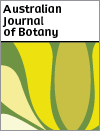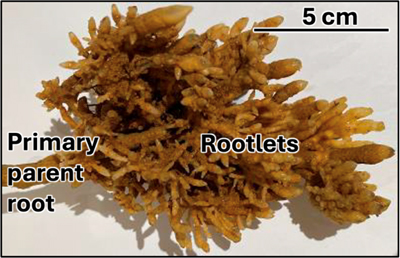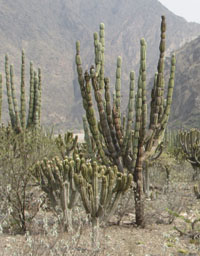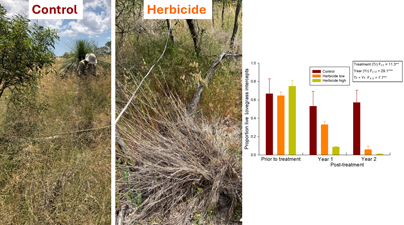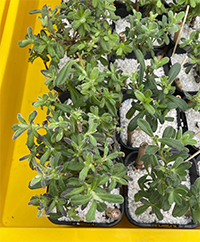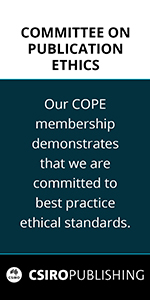Australian Journal of Botany
Volume 73
Number 5 2025
Unusual clusters of roots produced by the grasstree, Kingia australis, endemic to south-western Australia, were recently exposed by erosion of the banks of the Sabina River, 230 km south of Perth. The clusters average 8.4 × 5.5 cm in size, possessing >500 extremely hairy rootlets, with 260 per m3 of soil. Concentrated in the subsoil and perennial, the root clusters appear to enhance water and nutrient uptake throughout the year but there is a great deal yet to be learned about these novel root structures. Photograph by Byron Lamont.
The study of cacti is key to understanding how plants survive in extreme environments and how they interact with their surroundings. This article analyzes how these species have developed unique adaptations to thrive in arid zones and proposes a methodological guide for measuring their functional characteristics. The procedures described offer a useful tool to complement plant ecology studies and support conservation actions in dry ecosystems, especially in contexts of increasing anthropogenic pressure and climate change. Photograph by José Luis Marcelo Peña.
Two application rates of the herbicide flupropanate were tested for the control of invasive African lovegrass (Eragrostis curvula) in a conservation context in Mediterranean-climate south-western Australia. Flupropanate was effective in controlling African lovegrass, with no significant off-target effects detected at a plant community or functional group level. These findings contribute to the growing body of evidence regarding the use of flupropanate for invasive grass management. Photograph by G. Paczkowska.
Phytophthora species are oomycete root pathogens, which can cause great harm to threatened plant species populations. The chemical phosphite can reduce the harm by increasing plant resistance but it can also be phytotoxic. Our glasshouse study of six rare or threatened species showed that phosphite has variable effectiveness but the severe phytotoxic effects on some species highlights the need to find alternative control options. Photograph by Ed Liew.
The endoparasite Pilostyles hamiltoniorum severely reduced reproductive output of the host Daviesia angulata. The main effect was reduction in the number of host flowers that resulted in reduced fruit set. The effect of the endoparasite was as detrimental to the host as was that of other types of parasites that have much larger vegetative plant bodies. Photograph by Philip Ladd.


